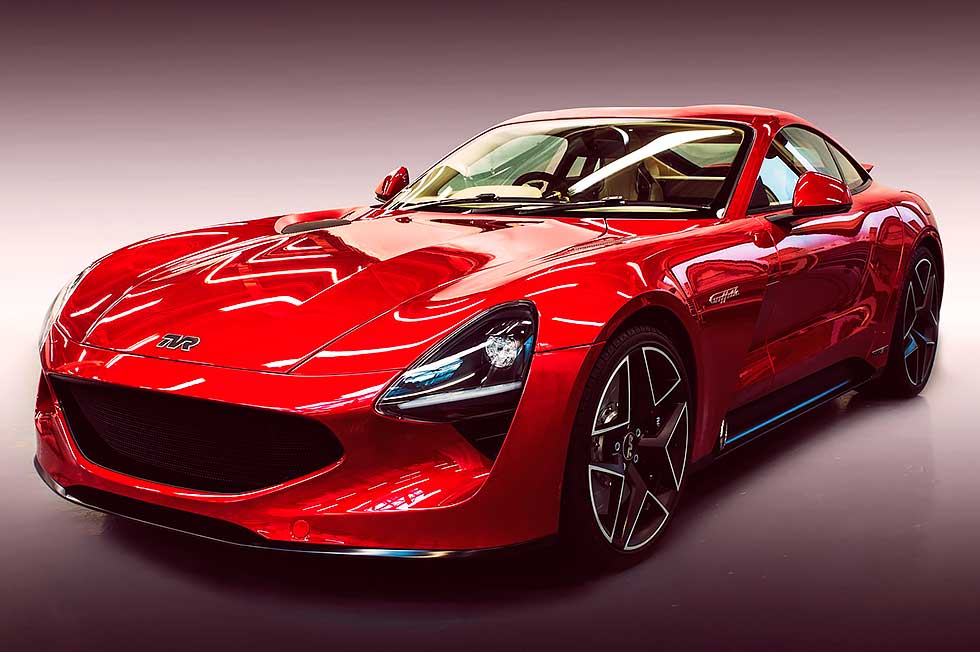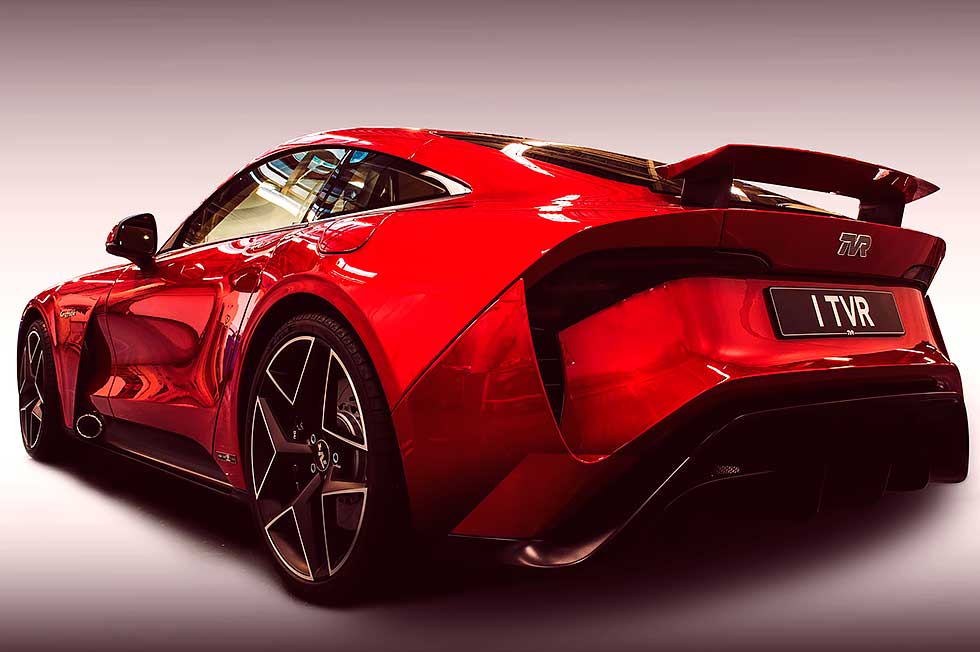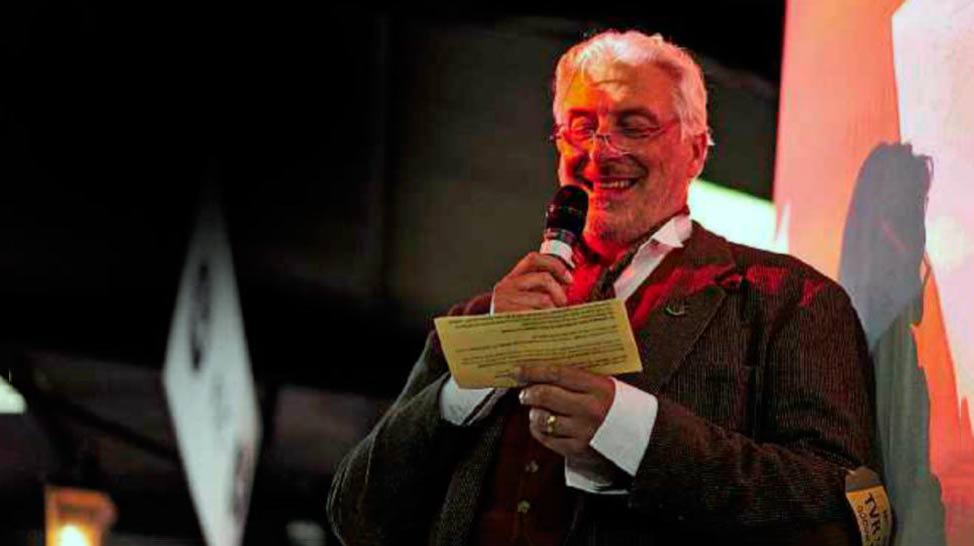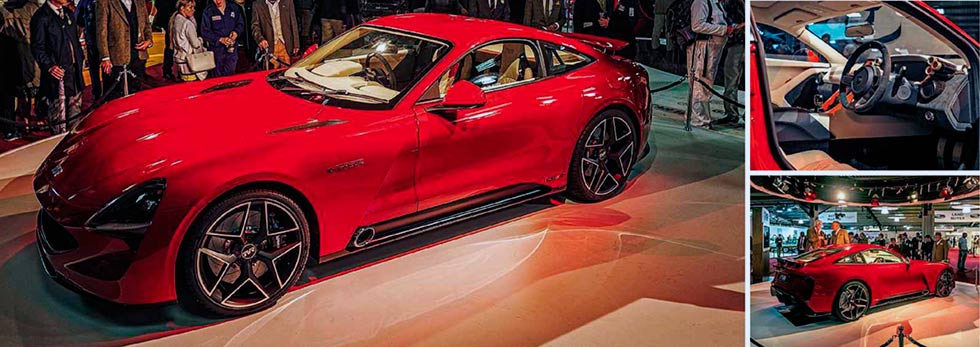TVR: back from the dead! Gordon Murray-engineered sports car revives the Griffith name at Goodwood. Words Glen Waddington.
And so it’s here at last. TVR, under the passionate leadership of British enthusiast Les Edgar since the marque was wrested from Nikolai Smolenski in 2013, is back with a bang. And a highly credible sports car. It moves on TVR’s tradition of brutal V8 power and the promise of a visceral driving experience by drawing on the sophisticated engineering ideas of none other than Gordon Murray, the man who brought the world the McLaren F1.

The new 2018 TVR Griffith starred in the Earls Court Motor Show display at Goodwood Revival, with a press call first thing in the morning on the opening day of the event. It was unveiled close to the first TVR ever built, back in 1948, and received with rapturous applause, even if some might have expected a rather more outrageous-looking car. Instead, the TVR for the new era is all about pushing the envelope where you can see it less obviously.
TVR claims the new car is only the second front/mid-engined production car yet built that features ground-effect aerodynamics. In that respect, this new £90,000 car follows only the much pricier McLaren-Mercedes SLR – also a Gordon Murray project.
So, what of the spec? There’s a Ford-based, Cosworth-developed 5.0-litre V8 promising a power-to-weight ratio of 600bhp per tonne, driving the rear wheels through a Tremec six-speed manual gearbox. Suspension is by wishbone-and-coil all-round, and the structure is a combination of steel and aluminium with carbon composite sections, clad in composites and aluminium.

Ground-effect aero is enabled by a completely flat floor, itself made possible by side-exit exhaust pipes. Despite the fastback profile, it’s a strict two-seater, and it weighs a creditable 1250kg, distributed 50/50 front/rear. Performance figures of more than 200mph and 0-60mph in under 4.0 seconds are promised. Production begins in late 2018, and declarations of interest have already been taken for the first year’s run of 500 Launch Edition cars.
There was a collective intake of breath when Edgar bullishly claimed that his new baby would be a ‘connected car’. To the evident relief of many, he quickly qualified his statement to say that he wasn’t talking wi-fi but instead about the old-fashioned connection to the driver that’s engendered by a clutch and a manual gearbox.
In fact, Edgar seems to understand exactly what a modern TVR should be. For his personal take on that, read the interview in the panel on the right.
Development of the Griffith
Mr TVR speaks Les Edgar tells Drive-My about the development of the Griffith…
‘Four years ago I bought TVR. How hard could it be? On day two I found out. We held on tight to everything that went before but developed a brand new car, facing a lack of finance and development time. We needed aerodynamics, and we knew a man who could do that. We needed a bombproof engine, and we knew who could do that. This car represents a triumvirate of British names: TVR, Gordon Murray Design and Cosworth. The journey since has taken all our waking hours. ‘The most difficult aspect was to define what TVR means. Physical traits. An awful lot of emotion. Big Brit spirit. It’s rebellious. Shorter than a 911; you can drive it on British B-roads. Then we added tech, though not electronics but the ground-effect aerodynamics and the carbonfibre chassis.

‘I love its underdog nature: the Griffith comes with a full tank of that. You get more bang for your buck, it’s an everyman supercar. ‘Radio Lancashire were a bit disappointed that it won’t be built in Blackpool but there’s not much left of the old factory. We’re building the new car in Ebbw Vale, Wales, 30 miles down the road from the new Aston Martin factory: South Wales is becoming an automotive centre of excellence. But I’d still like to do something in Blackpool. We’re not turning our back on TVR’s spiritual home.

‘I had aspirations to go sports car racing and needed a homologated car. There aren’t many marques that haven’t been soaked up by someone else. Starting a new brand is costly and often doomed, as is bringing back a marque that’s been dead for ten years. So I kept coming back to TVR and managed to get an audience with Smolenski. The company had been shelved, in effect. I persuaded him to sell. ‘My next step? I’ll sleep for a week. But I take a long-term view. There’ll be a convertible. Uprated models. A track-biased version. Then a facelift and ultimately the next version. For now, I think we’ve nailed the new TVR. This is it.’
GRIFFITH: WHAT’S IN THE GENES
No TVR model name is better known than the surname of Jack Griffith, the New York importer who in 1964 fitted a Ford V8 in place of the usual MGB motor to make a mad, stub-tailed road rocket. It still looked much the same as the original TVR Grantura launched by company founder Trevor Wilkinson (from whose name came ‘TVR’) in 1957.
From that basic shape, via the ‘wedge’ cars of the Martin Lilley era, we see the roots of today’s TVR look in the first new car created under iconoclastic chairman Peter Wheeler. That curvy, thunderously engaging machine, launched in 1991, was also named Griffith.
It used a Rover V8 in everhigher states of tune, though within a few years TVR was building its own engines, potent but not always durable. The new Griffith returns to a Ford-based V8, and the circle is completed. Griffith: they could hardly call it anything else. John Simister





